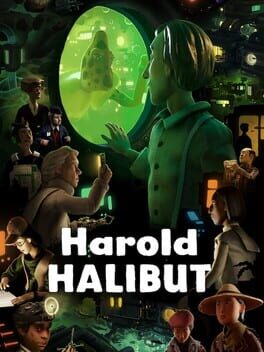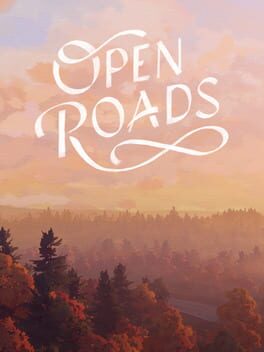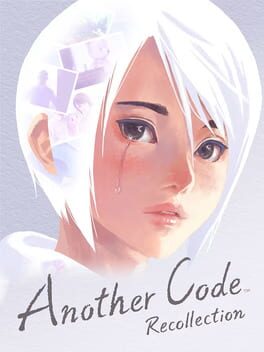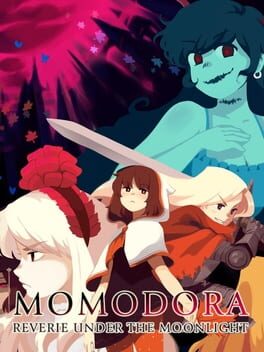thewillarowe
Lorelei and the Laser Eyes is a puzzle game unlike anything I’ve ever experienced. Swedish developer Simogo, which has been innovating in the genre since at least 2013’s Year Walk, has crafted an immaculate interactive mystery dripping with style, rich with an enthralling story to unravel, and chock full of masterfully designed puzzles to obsess over. The game’s logic-heavy mechanics will immediately draw parallels to Lucas Pope’s seminal Return of the Obra Dinn. But just as that game’s innovations and influence made it a common point of reference for critics when reviewing games that followed, I can only assume we will start seeing critics drawing comparisons to Lorelei in much the same way. Simogo’s accomplishment is a step forward for not only the puzzle genre but video games as a whole.
2024
Crow Country wears its influences on its sleeve, lovingly embracing features and elements you’d expect to find in an entry in this genre, from tank controls to item-based puzzles. Unfortunately, its reverence for the games that inspired it (Resident Evil 1 &2, Silent Hill) can hold it back, as Crow Country never quite captures the same magic as the giants of the genre. But even with some of the proverbial rides at this theme park feeling like they could use some work, the game is still a comforting addition to the retro-horror trend.
2021
2024
Pools, at least large public pools like the ones evoked by POOLS, are designed to be communal spaces. They are meant to be places of life and sound. In real life and the game, being alone when exploring a pool and its surrounding facilities can feel otherworldly. That isn’t necessarily an unsettling thing. While that is pretty explicitly what POOLS is trying to evoke, for me it manages to be almost meditative.
The best visual representation of this has always been, for me, the work of Leanne Shapton. Now an artist and writer, Shapton was a competitive swimmer for the majority of her youth. In her memoir, Swimming Studies, Shapton intercuts text with various pieces of art. The most memorable to me are the pages of simple geometric renderings of different pools across the world that Shapton has visited. The dark shapes of the pools are contrasted by a stark white surrounding, with nothing else.
Like Shapton’s art, POOLS breaks these spaces down to the basics of dark water and muted white surroundings. But the game triggers something in me much closer to my memories. It’s a combination of the visual rendering of the space, the audio of water dripping on tiles, and the ability to wander at my own pace. There are some rooms in POOLS that feel almost directly lifted from my brain like I’m wandering into memories. It’s not the unsettling experience the game is intended to be for most players, but something more personal and just as enthralling.
The best visual representation of this has always been, for me, the work of Leanne Shapton. Now an artist and writer, Shapton was a competitive swimmer for the majority of her youth. In her memoir, Swimming Studies, Shapton intercuts text with various pieces of art. The most memorable to me are the pages of simple geometric renderings of different pools across the world that Shapton has visited. The dark shapes of the pools are contrasted by a stark white surrounding, with nothing else.
Like Shapton’s art, POOLS breaks these spaces down to the basics of dark water and muted white surroundings. But the game triggers something in me much closer to my memories. It’s a combination of the visual rendering of the space, the audio of water dripping on tiles, and the ability to wander at my own pace. There are some rooms in POOLS that feel almost directly lifted from my brain like I’m wandering into memories. It’s not the unsettling experience the game is intended to be for most players, but something more personal and just as enthralling.
Headlines shape how most people think about and engage with the news, so the choice of just a few words is vital to determining how people frame a story in their minds. Playing The New York Times Simulator, I was reminded of a conversation with artist Alexandra Bell I attended in journalism school. Bell, a graduate of the Columbia Journalism School, discussed her art series “Counternarratives,” which presented large-scale versions of real New York Times pages that Bell had edited to highlight the inherent biases embedded in the news media and challenge the idea of objectivity.
The New York Times Simulator is hitting on the same themes. As a piece of art meant to radicalize players against a systemic issue in society, it gives them the power to stop being passive themselves and take action. It is entirely within the player’s power to determine what news is fit to print and how to present it.
The New York Times Simulator is hitting on the same themes. As a piece of art meant to radicalize players against a systemic issue in society, it gives them the power to stop being passive themselves and take action. It is entirely within the player’s power to determine what news is fit to print and how to present it.
Sucker for Love: Date to Die For is a magnificent sequel to First Date (both developed by Akabaka). It refines what worked in its predecessor while adding new twists and turns to both the horror and romance aspects of the game. The result is more terrifying, more swoon-worthy, and more balanced, a game that accomplishes its goals in style. A tighter focus on love and a more expansive sense of dread means that Date to Die For will have your heart racing from start to finish.
2024
Harold Halibut has been a long-time coming. The first game from developer Slow Bros. took 14 years to develop, owed entirely to its handcrafted claymation art style. It’s a striking visual style, but the characters that inhabit the claymation world are never given as much care as the painstaking manner in which they’re rendered.
2024
The way Open Roads’ snippets of dialogue push you through its many locales is more on-rails than I expected. While you still have the ability to explore environments and discover objects that add to the story, the constant commentary from Tess and Opal lessens your sense of agency. While Gone Home similarly pushes you through its house’s rooms in a somewhat predetermined order, its guidance felt subtle. Going at your own pace and following your own instincts as you pick up objects and actively unravel the story of the house where it takes place and the family who lives there was part of that, making you feel like the force driving the narrative forward. That interactivity is encouraged through simple features like being able to turn on and off the lights in rooms, letting you use the lights as a sort of marker of progress, and some players took advantage of the freedom it afforded you to manipulate objects and carry them around the house to engage in expressive acts of play, like creating little shrines to the love of its central couple.
Open Roads has no metaphorical light switches and doesn’t allow for so much player freedom or personal expression. With such a strong duo as Tess and Opal leading the game, Open Roads may have been better served as a straight visual novel. But the focus on them also makes picking up objects to unravel the mystery feel lacking. This is a story for the player to witness, not unravel through interaction themselves.
It leaves Open Roads feeling like a game at odds with itself, the family mystery that unfolds through your acts of exploration and examination versus the mother/daughter story told through dialogue between Tess and Opal. As far as road trips go, this one is a bumpy ride.
Open Roads has no metaphorical light switches and doesn’t allow for so much player freedom or personal expression. With such a strong duo as Tess and Opal leading the game, Open Roads may have been better served as a straight visual novel. But the focus on them also makes picking up objects to unravel the mystery feel lacking. This is a story for the player to witness, not unravel through interaction themselves.
It leaves Open Roads feeling like a game at odds with itself, the family mystery that unfolds through your acts of exploration and examination versus the mother/daughter story told through dialogue between Tess and Opal. As far as road trips go, this one is a bumpy ride.
2024
There is a satisfaction that comes from being told you are too weak to face a challenge and then quickly handing your enemy their defeat on a silver platter regardless. Being the David to your enemy’s Goliath and leveraging not just physical but strategic power to overcome the odds is a thrill that never gets old. That’s why no matter how many times I finish a battle in Unicorn Overlord, I remain eager to find my next combatant and teach them not to underestimate me.
The self-described tactical RPG (that is in reality more of a real-time strategy game) comes to us from Vanillaware, the developer behind games like Odin’s Sphere and 13 Sentinels: Aegis Rim, and it’s a marvel of system design that blends planning ahead with fast-paced reactions. Just when you think you’ve learned everything you need to know about how to approach and win its large-scale tactical battles, it unveils yet another piece of the puzzle you need to consider. While the narrative of Vanillaware’s latest release doesn’t reach the heights that fans of the twisting 13 Sentinels may hope for, it doesn’t need to—not when its combat is so meticulously designed and captivating. Unicorn Overlord is one of the most impressive tactics games in recent memory, and it’s not to be missed.
The self-described tactical RPG (that is in reality more of a real-time strategy game) comes to us from Vanillaware, the developer behind games like Odin’s Sphere and 13 Sentinels: Aegis Rim, and it’s a marvel of system design that blends planning ahead with fast-paced reactions. Just when you think you’ve learned everything you need to know about how to approach and win its large-scale tactical battles, it unveils yet another piece of the puzzle you need to consider. While the narrative of Vanillaware’s latest release doesn’t reach the heights that fans of the twisting 13 Sentinels may hope for, it doesn’t need to—not when its combat is so meticulously designed and captivating. Unicorn Overlord is one of the most impressive tactics games in recent memory, and it’s not to be missed.
A deeply messy and conflicted game that shows the strains of the capitalist need to remake this game for money versus the interesting metanarrative of what it means to remake FF7. Swings from some of the most beautifully written and heartbreaking moments in any game ever to some of the most tedious gameplay slogs ever. It is the best and worst game in so many ways. The pacing is horrid and at the end of the day i think the open world bloat gets in the way of all the good this game does have. On the ending: it wants to have its cake and it eat it too. It shouldn't. Remake set up so many big swings and this game refuses to make good on those.

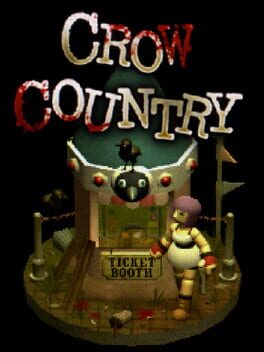
![NieR Re[in]carnation](https://images.igdb.com/igdb/image/upload/t_cover_big/co7bm4.jpg)



